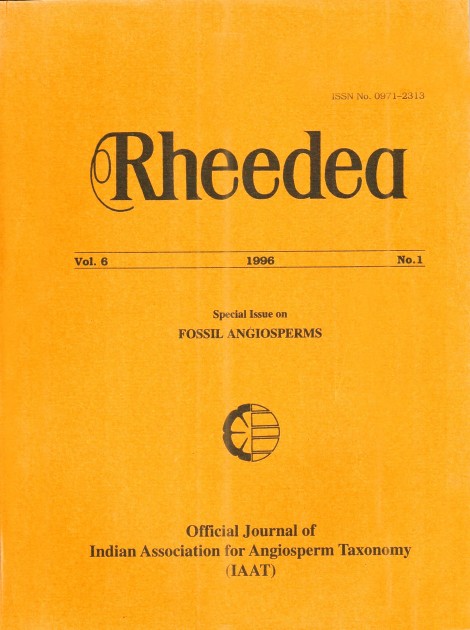Tropical estuarine angiosperm vegetation in the Neogene sediments of Bhutan, Eastern Himalaya, and remarks on Palaeogeography of Siwalik foreland basins of Indian Subcontinent
Manju Banerjee
Published on : 01-Jan-2022
DOI : https://dx.doi.org/10.22244/rheedea.1996.06.01.11
DownloadAbstract
Impression-compression angiosperm leaf remains and rich palynoflora from Neogene sediments of Bhutan, Eastern Himalaya, expose a predominantly tropical- subtropical, humid vegetation with high rate of precipitation. Angiosperm floristic of mild coastal environment initiated during Formation I (Lower Siwalik). Diverse angiosperm vegetation including estuarine mangrove forest flourished in the area in the upper part of Lower Siwalik and basal part of Formation II (Middle Siwalik). Coastal environment gradually receded in Formation III (Upper Siwalik). Temperate climate angiosperm plant representatives are encountered in the Middle Siwalik with inconspicuous diversity and frequency which increase slightly in the Upper Siwalik. Geographical position of Bhutan, Eastern Himalaya, was towards more lower latitude and enjoying tropical climate, higher rate of precipitation and marine inundation during Neogene period. Orogenic movements of Himalayan upliftment have changed the nearshore palaeogeography of the area towards a highland mountainous topography since Late Upper Siwalik. Tropical-subtropical environment prevailed in the other Siwalik foreland basins of Indian Subcontinent and mangrove esturine forest thrived in Himachal Pradesh sector during Late Lower Siwalik. More influence of temperate plant pollen in the Lower, Middle and Upper Siwalik in the western sectors suggest more early and active orogenesis in the areas compared to Eastern Himalaya.
